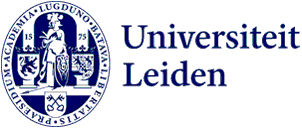
NWO grant for research on Aramaic inscriptions: 'Palmyra is more than blown-up tombs'
Two thousand years ago, the Middle East found itself caught between the rise of the Roman Empire in the west and the Parthian Empire in the east. PhD candidate Nolke Tasma has been awarded an NWO grant to investigate how local inhabitants experienced these changes.
Previous research on developments in the Middle East often focused on the Roman perspective. Roman historians primarily viewed the area as the periphery of their empire, where they regularly clashed with the Parthians.
Tasma believes he can add something to this. ‘A form of Aramaic was spoken throughout the Middle East at that time,’ he explains. ‘If you start looking at sources in that lingua franca, you suddenly have an internal perspective on the developments of the time.’ Inscriptions from cities like Palmyra, Hatra, and Edessa in the north, but also regions like Mesene and Elymais in the south, show how people wanted to present themselves to their environment and posterity. These texts mainly deal with funerary traditions, religious life of that time, and the social structures in which people moved. An analysis of the texts thus offers much more information about the real lives of these people between the Roman and Parthian Empires than historical material can provide. By studying these Aramaic inscriptions from the entire area, Tasma hopes to trace how the geopolitical events of that time influenced local life in the Middle East.
Palmyra
One of the cities that will be central is Palmyra in present-day Syria. ‘That city had a flourishing period at the beginning of our era. A large share of the approximately four thousand inscriptions I will study come from this city,’ Tasma explains. ‘They have been studied before, but never in conjunction with all the other material from the border area. The different forms of outside influence in Palmyra show what people identified with and how they wanted to be seen. Noblemen from Palmyra and Edessa liked to collect Iranian titles, and Greek or Latin terms were also often used for local institutions. However, this does not mean that these titles and institutions were actually Greek, Roman, or Iranian. The project focuses on the complex reality behind this terminology: did people orient themselves towards Rome, or Parthia, or mainly locally? And what factors influenced how someone from Palmyra or Hatra presented themselves in public life, and how did this differ per region?’
More than just ruins
Ultimately, Tasma wants to deliver a database that makes it easier to answer such questions, even after the project is completed. This will preserve the data from the project for further research. ‘A large part of the area I'm researching has of course been a war zone in recent years,’ he says. ‘A city like Palmyra has mainly been in the news over the past decade because of the atrocities that have taken place there. I think it's important to tell the story of the people who created the heritage that has now been partly destroyed, so that it's not just about the destruction of, for example, the Palmyrene grave towers in 2015, but also about their importance to those who made and used them. It's great that NWO has made funds available for this.’
This NWO grant will make it possible for Nolke Tasma to work on the project, titled Aramaic Epigraphy in the Roman Near East and the Parthian Commonwealth: Imperial Elite and Local Reality, for the next four years. He will be supervised by Dr Margaretha Folmer and Professor Ab de Jong, and will be part of the Hebrew and Aramaic department.
